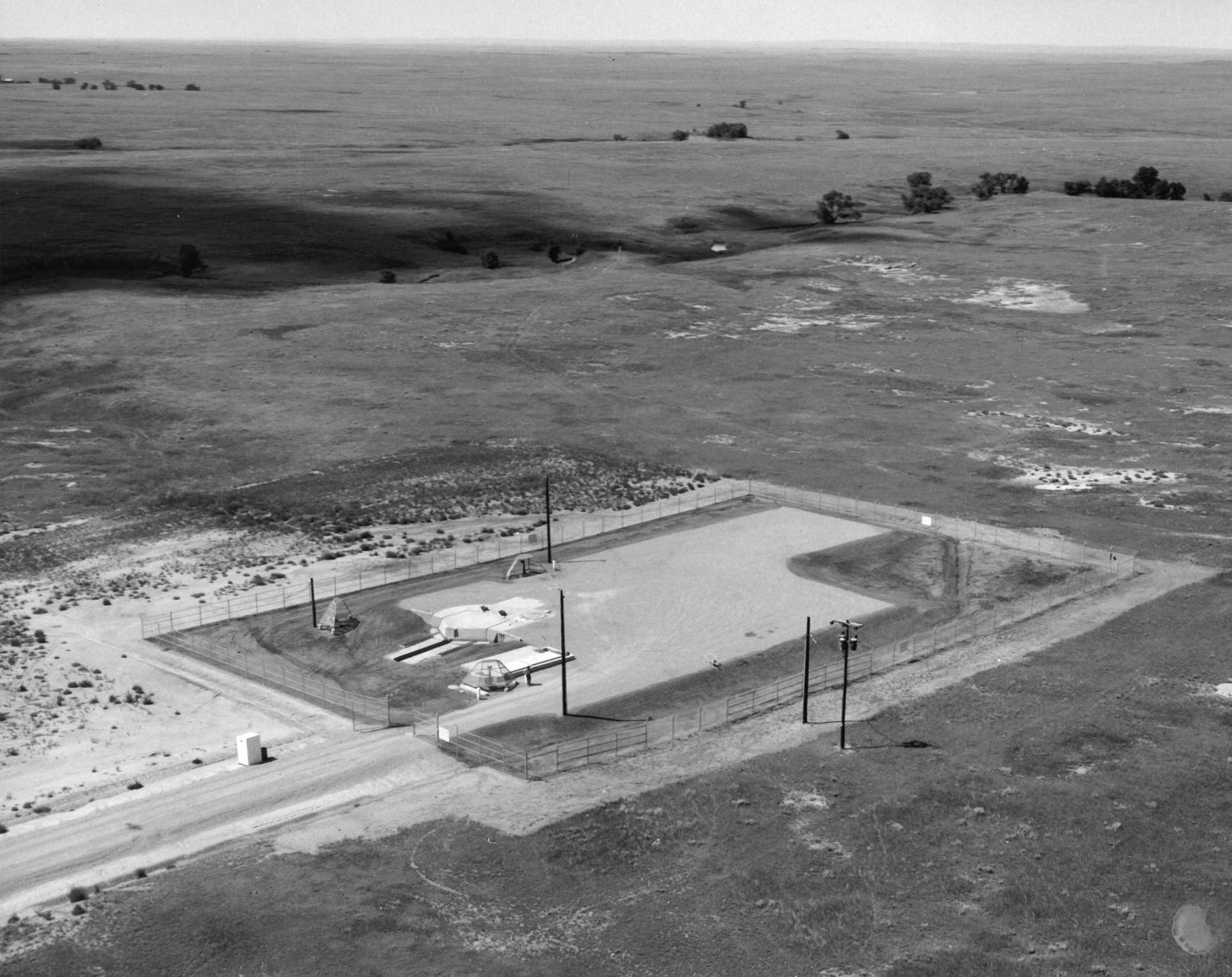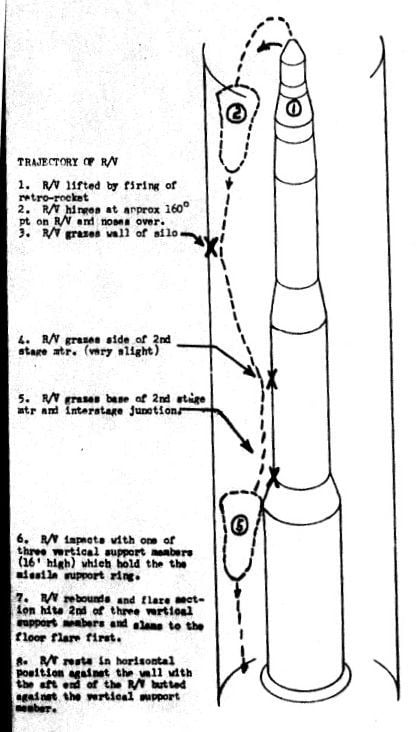Winston
Lorenzo von Matterhorn
- Joined
- Jan 31, 2009
- Messages
- 9,560
- Reaction score
- 1,748
It's called "stray voltage", REALLY stray voltage:
https://rapidcityjournal.com/news/l...cle_653347a4-04e8-5c29-a778-3a6a6c3cfd84.html
Excerpts:
At noon that Saturday, the airmen received orders to troubleshoot and repair the Lima-02 security system. They made the long drive and arrived at 2 p.m.
The airmen worked in the roughly 5 feet of space between the steel launch tube and the equipment-room wall, among racks of electronics and surfaces painted mostly in pale, institutional green. Though the launch tube was between them and the missile, the missile was not much more than an arm's length away.
According to the Air Force report on the accident, one of the airmen removed a fuse as part of a check on a security alarm control box. The report says the airman was lacking a fuse puller, so he used a screwdriver to pry the fuse from its clip.
When the fuse was re-inserted, the report says, it was supposed to click. The sound of a click indicated good contact with the holder. But there was no click, so the airman repeated the procedure. Still not certain he heard a click, he pulled the fuse out a third time and pushed it back into the holder again.
At 1500 hours MST, the report says, referencing 3 p.m. Mountain Standard Time, simultaneously with the making of this contact, a loud explosion occurred in the launch tube.
Hicks arrived at the silo later and heard a simpler story from his team chief. According to that story, it was merely the removal of the fuse with a screwdriver not the pushing-in of the fuse that caused the problem. Hicks said the metal of the screwdriver contacted the positive side of the fuse and also the fuses grounded metal holder, causing a short circuit that sent electricity flowing to unintended places.
Hicks and the accident report agree that the wrong tool was used. In the language of the report, The technician did not use the authorized, available tool to remove the fuse.
The resulting short circuit might not have been problematic had it not been for some wiring in one of the missiles retrorockets that was later found to be faulty. According to Hicks, some weakly insulated or exposed wiring may have been in contact with the metal casing of a retrorocket, allowing for a jolt of electricity that caused the retrorocket to fire.
The retrorockets were housed below the cone of the missile. They were supposed to fire when the missile was in outer space, to separate the third and final fuel stage from the cone, allowing the cone and its warhead which were collectively called the "re-entry vehicle" to fall toward the target.
When one of the retrorockets fired inside the missile in the Lima-02 silo, pressure built up in the space where the retrorockets were housed, and the cone of the missile which was about 5 feet tall, nearly 3 feet in diameter at its base, and about 750 pounds in weight burst off and fell down in the few feet of space between the missile and the silo wall.
The cone hit the wall of the silo, bounced back toward the missile and grazed it in two spots along the second fuel stage, hit two of the three suspension cables that supported the missile, and finally crashed to the concrete floor of the silo and came to rest on its side. Luckily, the cone did not do enough damage to the missile to cause the missile to explode.
Neither of the airmen immediately knew what had happened. The bureaucratically written accident report says they expeditiously evacuated after hearing the explosion, as the silo filled with gray smoke.
The silo in this story:


https://rapidcityjournal.com/news/l...cle_653347a4-04e8-5c29-a778-3a6a6c3cfd84.html
Excerpts:
At noon that Saturday, the airmen received orders to troubleshoot and repair the Lima-02 security system. They made the long drive and arrived at 2 p.m.
The airmen worked in the roughly 5 feet of space between the steel launch tube and the equipment-room wall, among racks of electronics and surfaces painted mostly in pale, institutional green. Though the launch tube was between them and the missile, the missile was not much more than an arm's length away.
According to the Air Force report on the accident, one of the airmen removed a fuse as part of a check on a security alarm control box. The report says the airman was lacking a fuse puller, so he used a screwdriver to pry the fuse from its clip.
When the fuse was re-inserted, the report says, it was supposed to click. The sound of a click indicated good contact with the holder. But there was no click, so the airman repeated the procedure. Still not certain he heard a click, he pulled the fuse out a third time and pushed it back into the holder again.
At 1500 hours MST, the report says, referencing 3 p.m. Mountain Standard Time, simultaneously with the making of this contact, a loud explosion occurred in the launch tube.
Hicks arrived at the silo later and heard a simpler story from his team chief. According to that story, it was merely the removal of the fuse with a screwdriver not the pushing-in of the fuse that caused the problem. Hicks said the metal of the screwdriver contacted the positive side of the fuse and also the fuses grounded metal holder, causing a short circuit that sent electricity flowing to unintended places.
Hicks and the accident report agree that the wrong tool was used. In the language of the report, The technician did not use the authorized, available tool to remove the fuse.
The resulting short circuit might not have been problematic had it not been for some wiring in one of the missiles retrorockets that was later found to be faulty. According to Hicks, some weakly insulated or exposed wiring may have been in contact with the metal casing of a retrorocket, allowing for a jolt of electricity that caused the retrorocket to fire.
The retrorockets were housed below the cone of the missile. They were supposed to fire when the missile was in outer space, to separate the third and final fuel stage from the cone, allowing the cone and its warhead which were collectively called the "re-entry vehicle" to fall toward the target.
When one of the retrorockets fired inside the missile in the Lima-02 silo, pressure built up in the space where the retrorockets were housed, and the cone of the missile which was about 5 feet tall, nearly 3 feet in diameter at its base, and about 750 pounds in weight burst off and fell down in the few feet of space between the missile and the silo wall.
The cone hit the wall of the silo, bounced back toward the missile and grazed it in two spots along the second fuel stage, hit two of the three suspension cables that supported the missile, and finally crashed to the concrete floor of the silo and came to rest on its side. Luckily, the cone did not do enough damage to the missile to cause the missile to explode.
Neither of the airmen immediately knew what had happened. The bureaucratically written accident report says they expeditiously evacuated after hearing the explosion, as the silo filled with gray smoke.
The silo in this story:





